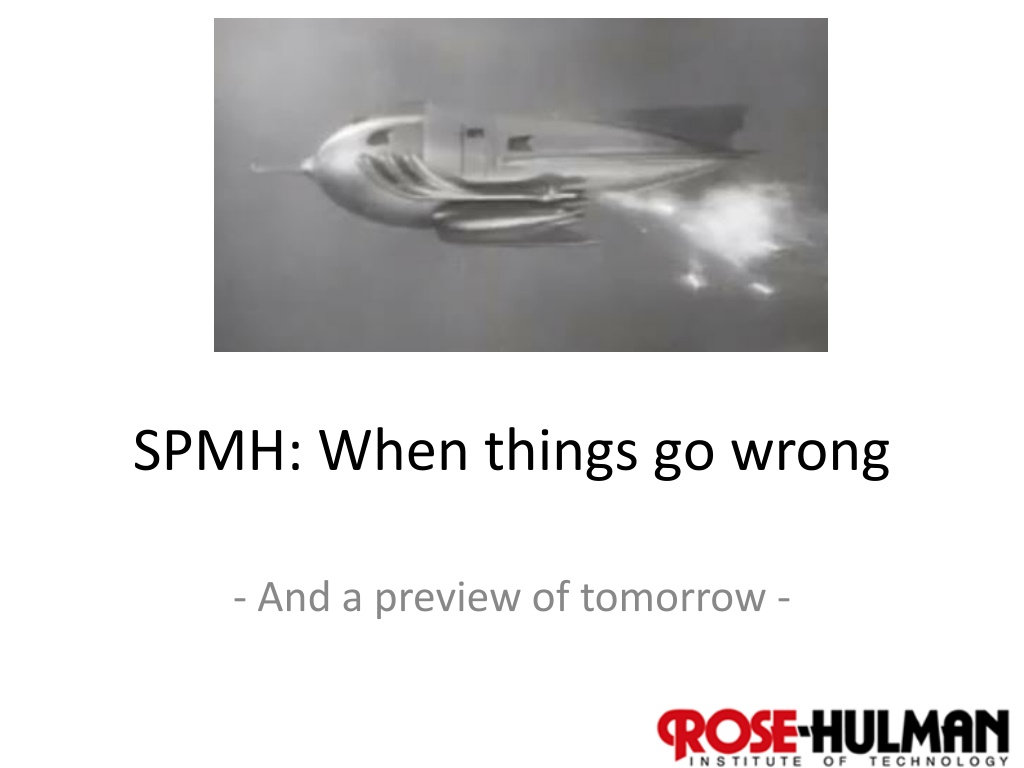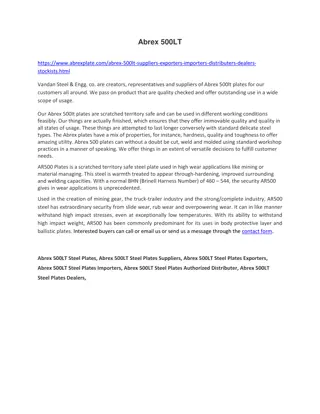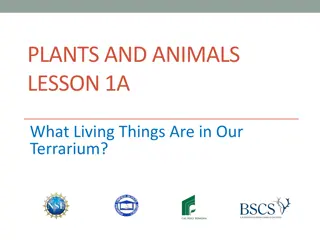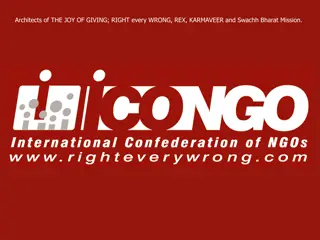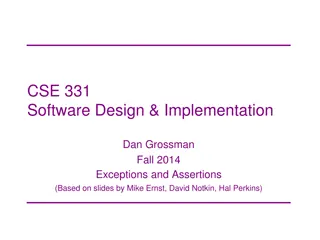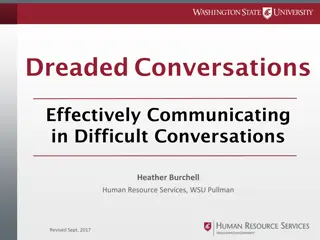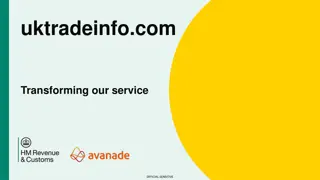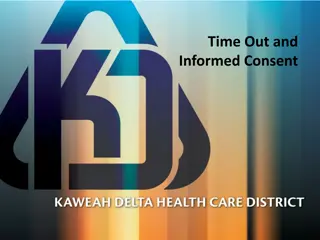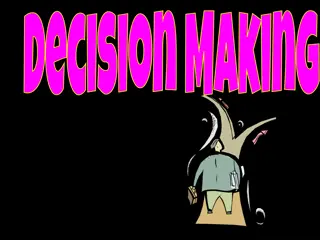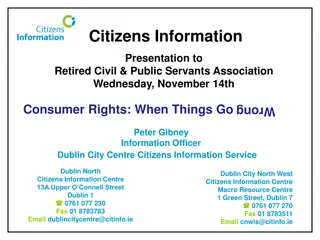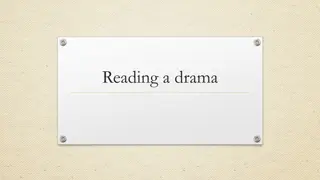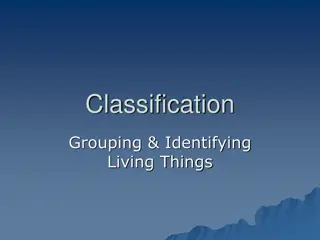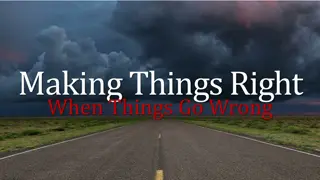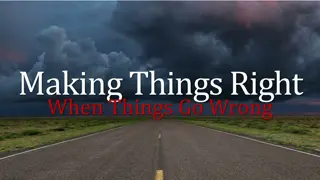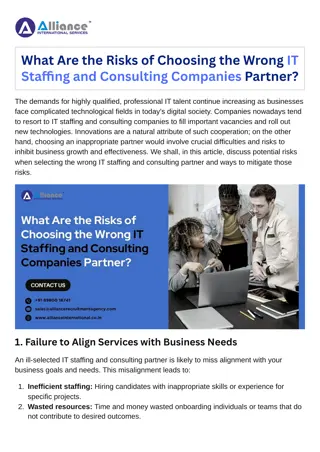SPMH: When things go wrong
Preview of handling risks, project objectives alignment, technical infrastructure, and project management skills for junior projects. Insights on manager roles, control, and risk management strategies.
Download Presentation

Please find below an Image/Link to download the presentation.
The content on the website is provided AS IS for your information and personal use only. It may not be sold, licensed, or shared on other websites without obtaining consent from the author. Download presentation by click this link. If you encounter any issues during the download, it is possible that the publisher has removed the file from their server.
E N D
Presentation Transcript
SPMH: When things go wrong - And a preview of tomorrow - 1
Quick Survey Do you have a working list of risks for your junior project? Do you have strategies for handling these risks? 2
Lets go through Phillips Risks With the other people here, who are from your junior project, say: Do the customers and developers agree on the junior project objectives? Have you done a project like this before? Have you worked with the tools before? Will the project solve a new problem or use new technology? Implies feature creep Increased likelihood of backtracking Is the technical infrastructure in place? What is the relationship between customers, users, and the team? Is the implementation date realistic? Do you have the project management skills needed? 3
What do the managers do? All managers do these things: Plan ahead of time Lead - during Control after (and during) Project managers are first level managers: Typically don t hire and fire. Do keep projects on schedule. Often also are lead developers. These are the risk managers ! 4
Control = plan + status + corrective action Control as in Control the risks What problem would Highsmith have with this? (hint: think Fowler s feature devotion ) 5
Steves example NCR Corp, Dundee Scotland Risk assessment review, 1993 New generation of ATM Concluded they should develop two different cabinets, in case the riskier one failed. 6
Should people be allowed to go dark ? 7
Is there a point at which developers should push back on manager status requests? 8
What Data to collect? Measure Everything or it will seem like you re measuring nothing LOC, Function Points, GUI Screens Errors, Cost-Per-Product, total time for specific features Do not ask people to collect status without explaining why the project and organization need it!? 9
Common Control Tool A Management Information Center To us, Mickey Mouse What s the point? But, we d also like Management keeping everyone else in line! Will that third party deliver the software to plug into ours, next week? Will the integration test lab be available for our project before the end of this sprint? Can we keep the customer from changing his mind, again? Over lunch, your client suddenly realizes what the system you re building for him really has to have! 10
The Control Goal is Risk Management Risk avoidance Act ahead to reduce the chance it occurs Risk transfer Pass the hot potato Risk mitigation Have a plan in place, in case it occurs Have some reserves to apply when risks actually arise. This includes, especially, slack time / people Have alternatives you can jump to if necessary. 11
Phillips Proactive Ideas Prevention act early Elimination of error - TQM Anticipation of failure And plan around it Management of change Adapt the organization to reduce risks 12
Well-known bad ideas The ostrich approach: Ignoring all risks, or pretending they don t exist The prayer approach: Looking to a higher being to solve all your problems or to making them disappear The denial approach: Recognizing that certain situations may cause problems for your project but refusing to accept that these situations may occur 13
Why do people dislike risk management? Risks are threats. (See p 253) We like being optimistic. Do you have to be confident to code well? We are unhappy when making choices. See Barry Schwartz s TED talk Freedom of choice is painful! Change is hard. Ref Edgar Schein s theory of organizational change: Principle 1: survival anxiety or guilt must be greater than learning anxiety Principle 2: Learning anxiety must be reduced rather than increasing survival anxiety. MIT s Edgar Schein 14
3 Options When Making Global Project Decisions Continue on your current course Take corrective action Cancel the project Quantify the decision? How much is that going to cost? 15
A good place to work? How much risk do you want? Startups Maybe 3% - 5% success rate? Working for the government 100% success rate? In-between Working for Apple, IBM, Microsoft, or Google. 16
Risk Examples Personnel shortfalls Unrealistic schedules and budgets Developing the wrong software functions Developing the wrong user interface Goldplating Continuing stream of requirements changes Shortfalls in externally furnished components Real-time performance shortfalls Straining computer science capabilities 17
Common ways Rose CSSE teams manage risks Matrix showing risks showing both: Probability of occurrence, and Consequence if it does occur Teams then use this matrix to manage the risks over time. 18
Example risk matrix - showing some scenarios - This is An ongoing whiteboard risk management ! 19
Preview of Tomorrow Work Breakdown Structure (WBS) See intro article athttp://en.wikipedia.org/wiki/Work_breakdo wn_structure. Goal is to partition the work into a low-level set of outcomes, then do tasks required to achieve those. 20
For tomorrow Get together (starting now) with your teammates from your junior project, and: Create a Work Breakdown Structure (WBS) for your junior project, like on the last slide. Start with our Trello tasks These might need enhancement! Try to partition the work by outcomes. Then list key tasks for each outcome. Get to a low enough level, given what you know now about the project, that we can organize these into a plan, tomorrow in class. Estimate how long you think each will take. 21
